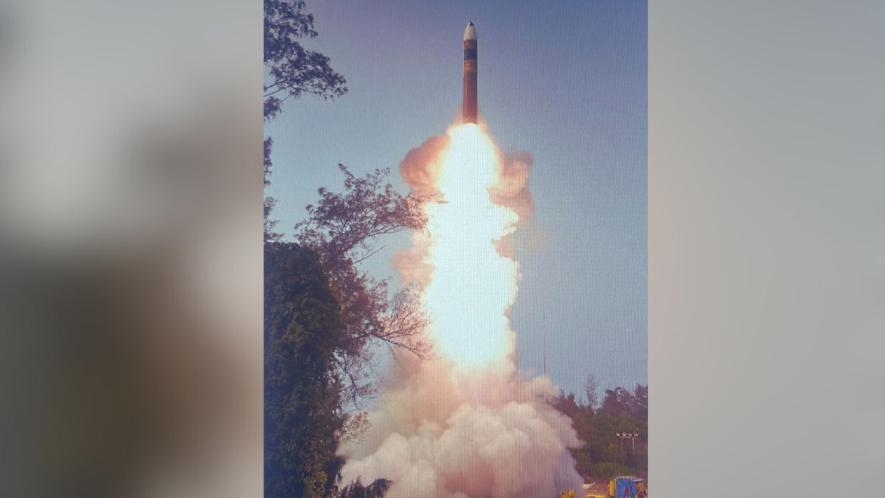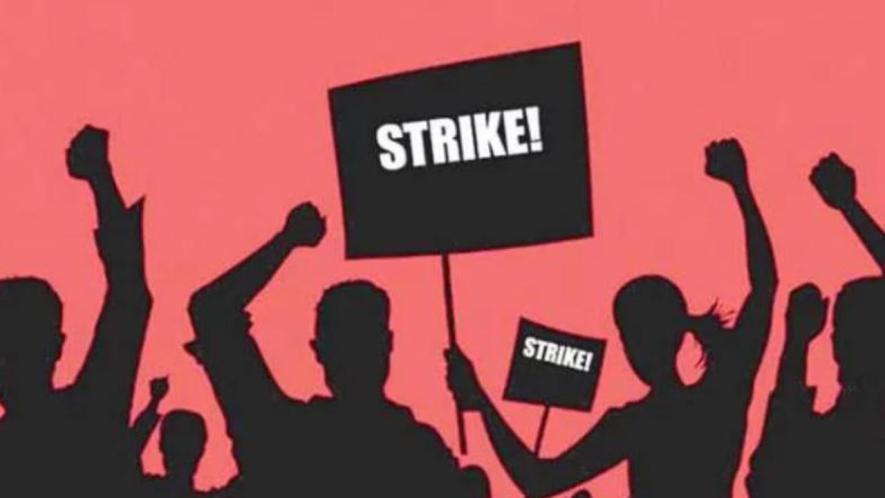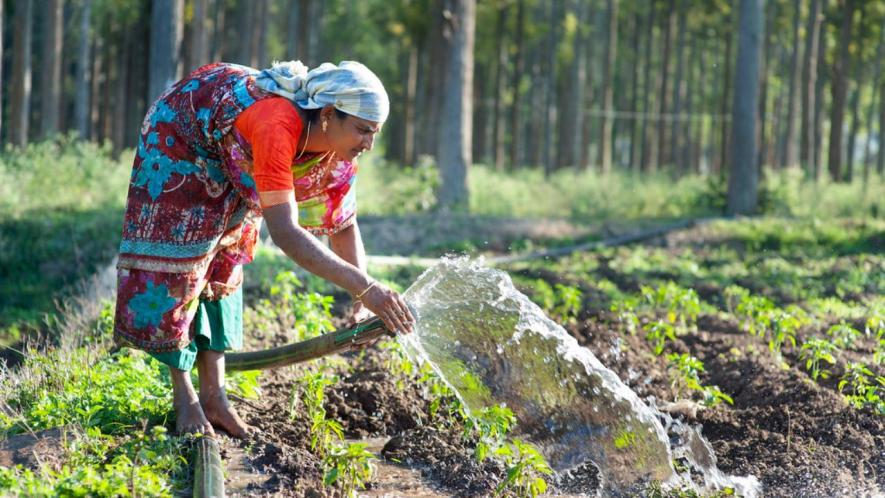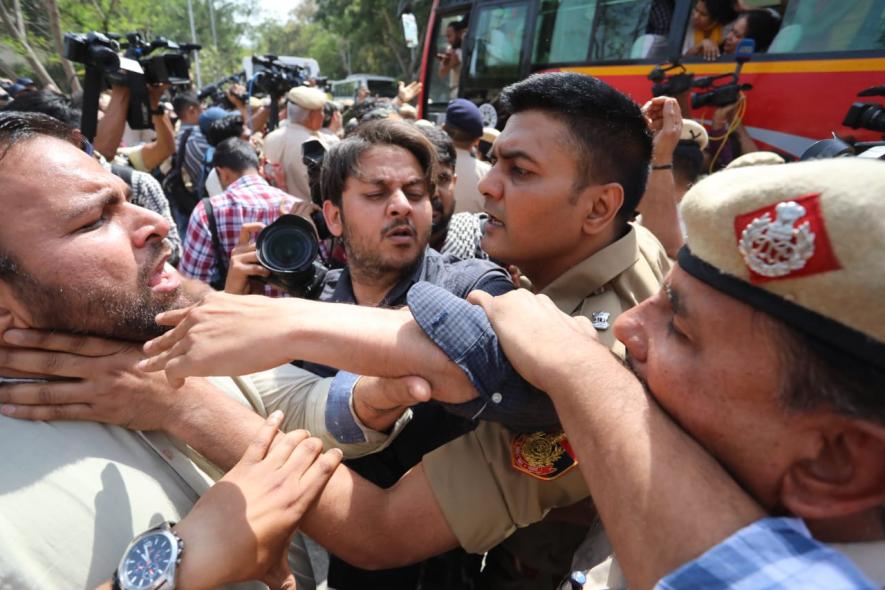INDIA
LABOUR LOG: Under-Construction Work Sites, Sewers Becoming ARE Death Traps
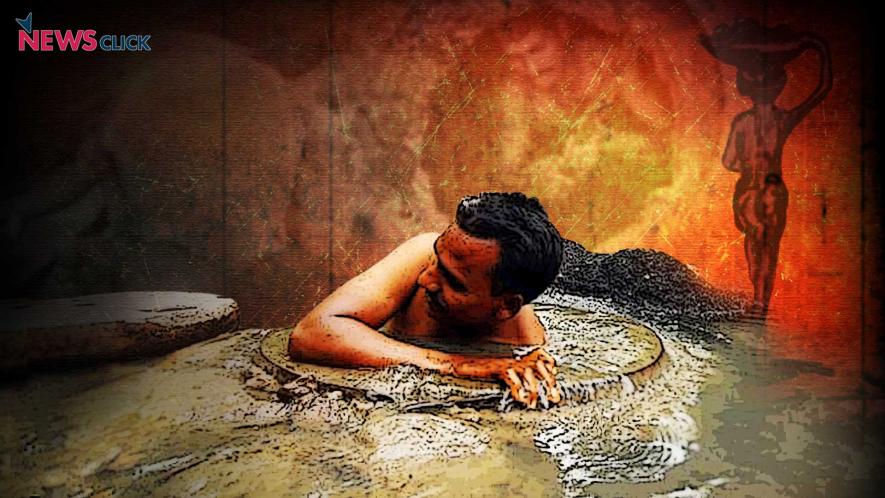
India has an abysmal record in poor working conditions, poor wages and worker deaths at workplace, more so in what is called the informal or unorganised sector, especially on construction sites, in mines or while cleaning sewage. Most of these workers are migrant contractual workers or daily wagers, who are deprived of social security and other benefits. NewsClick has collated some of these stories of protests and deaths in the world of labour in the past one week.
Mumbai: 3 Die in Sewer Tragedy in Malad West
Three labourers died as they fell into the chamber of a 15 feet underground sewer drain that they were contracted to clean, according to reports. The incident took place on March 21 in Ambujwadi in Walad West, when two workers died. The third succumbed to injuries on March 23.
According to the PTI, the labourers were contracted to clean the sewer drain when they fell into the chamber below a public toilet that is maintained by a contractor. Subsequently, the locals who were at the scene pulled them out and sent them to a nearby hospital.
The deceased were identified as Surak Kevat, 18, Bikas Kevat, 20 and Ramlagan Kevat, 45. All three were from the same family.
Meanwhile, the BMC has sent a notice to Jay Durga Seva Society, who had the cleaning contract. "Since the BMC has appointed your organisation, So, it's your responsibility to maintain the said public toilet. The incident of two deaths due to failing in the septic tank is serious in nature. It is observed that your organization is responsible for this negligence. So u need to clarify in next 24 hours as to why police should not initiate action against you," said the notice.
Haryana: Rewari Factory Blast Toll Reaches 11
Three more workers died on March 23, 2024, taking the death toll to 11 in a blast in a dust collector in an auto spare parts factory, Lifelong Pvt Ltd, in Rewari on March 16. The deceased workers were from Uttar Pradesh, Bihar and Delhi. A total of 38 workers were injured in the blast.
The three who are the latest to die were identified as Devesh from Bahraich, Manoj from Gonda and Ghanshyam from Hardoi.
Even though the workers have alleged management negligence as the dust collector had not been cleaned for months, no arrests have been made so far, said a report in the Times of India. This is despite an FIR being lodged the day after the blast.
Incidentally, the FIR has named just one contractor, Shivam. When asked by ToI about arrests, the SHO of Dharuhera, Jagdeesh Chand said the complainant had named actions against the contractors and company officials but had named only one Shivam. “We need more time to investigate and include names in the FIR,” he added.
Bihar: 1 Worker Dies as Bridge Slabs Fall
On March 22, one worker died and eight others injured when huge slabs on an under-construction bridge in Bihar’s Supaul over River Kosi collapsed over them.
The 10.5 km bridge is being built as part of the Centre’s ambitious Bharatmala Project, and is a joint venture between Gammon Engineers and Contractors Private Limited and Transrail Lighting Limited, according to Indian Express.
Delhi: 2 Jean Cutting Outlet Workers Die in Building Collapse
Two workers died and one was trapped under the debris of a building that collapsed in Welcome area’s Kabir Nagar in Northeast Delhi on March 21. They were working in a jean cutting unit on the ground floor, while the second floor was vacant, according to a NDTV report.
The dead workers have been identified as Arshad, 30, and Tauhid, 20. Rehan, 22, was injured. The owner was named as one Shahid.
Bengal: 11 Die as Under-Construction Building Collapses
An under-construction five-floor apartment in Garden Reach area of Kolkata collapsed on March 18, leaving 11 workers dead, including two women. The building’s promoter Mohammed Wassi and the land owner have been arrested. The building was ”illegal”, as it did not have the required permission. A probe has been ordered.
Uttarakhand: Labourer Dies While Laying Sewer Line
On March 18, one labourer died and another was injured as they were buried under the debris while laying a sewer line in Mussoorie. The deceased was identified as Mangal Tharu, 24, and the injured as Bhim Bahadur, 60. Both hailed from Nepal.
Both the workers were hired by a contractor working for Peyjal Nigam to dig deep, when a huge stone fell over them, said a report in Times of India.
Odisha: Labourer Crushed to Death in Jajpur
One labourer died and two others were seriously injured in a stone crushing unit on March 18, in Rahadpur of Jajpur district.
The incident took place when the trio was opening the wheels of a crusher machine, and one of them apparently came under the wheels and died on the spot, while two others sustained serious injuries, said a report in New Indian Express.
Angry villagers blocked the roads, alleging that the stone crushing unit was illegal.
“No stone crusher unit in Rahadpur and other areas has no objection certificate (NOC) to operate. Local labourers don’t get work at these stone crushing units. The owners of stone crushing units are bringing labourers from West Bengal, Bihar, Jharkhand and Andhra Pradesh to work here,” a villager was quoted as saying.
Maharashtra: MNC Employee Kills Self due to ‘Work Pressure’
On March 17, Saurabh Kumar Ladda, 25, an MNC employee from Pune, allegedly jumped from the ninth floor of his apartment in Wadala. He used to live in a flat with his roommates.
According to media reports, Ladda had graduated in chemical engineering from IIT and did his MBA from IIM. After working as an intern with a multinational company for some time, he was hired a year ago and was working on a project in Ahmedabad,” a report in the Indian Express said.
The report quoted a police officer as saying that several chats found on his phone indicated pressure at work.
UP: Resort Roof Collapses, 2 Workers Killed in Bahraich
On March 16, two labourers died and nine were injured when the roof of an under-construction resort collapsed over them. Six workers were injured.
The Laser Resort, where the incident happened, is situated along the Bahraich-Sitapur highway
A case has been registered against the resort owner and the contractor, said reports.
